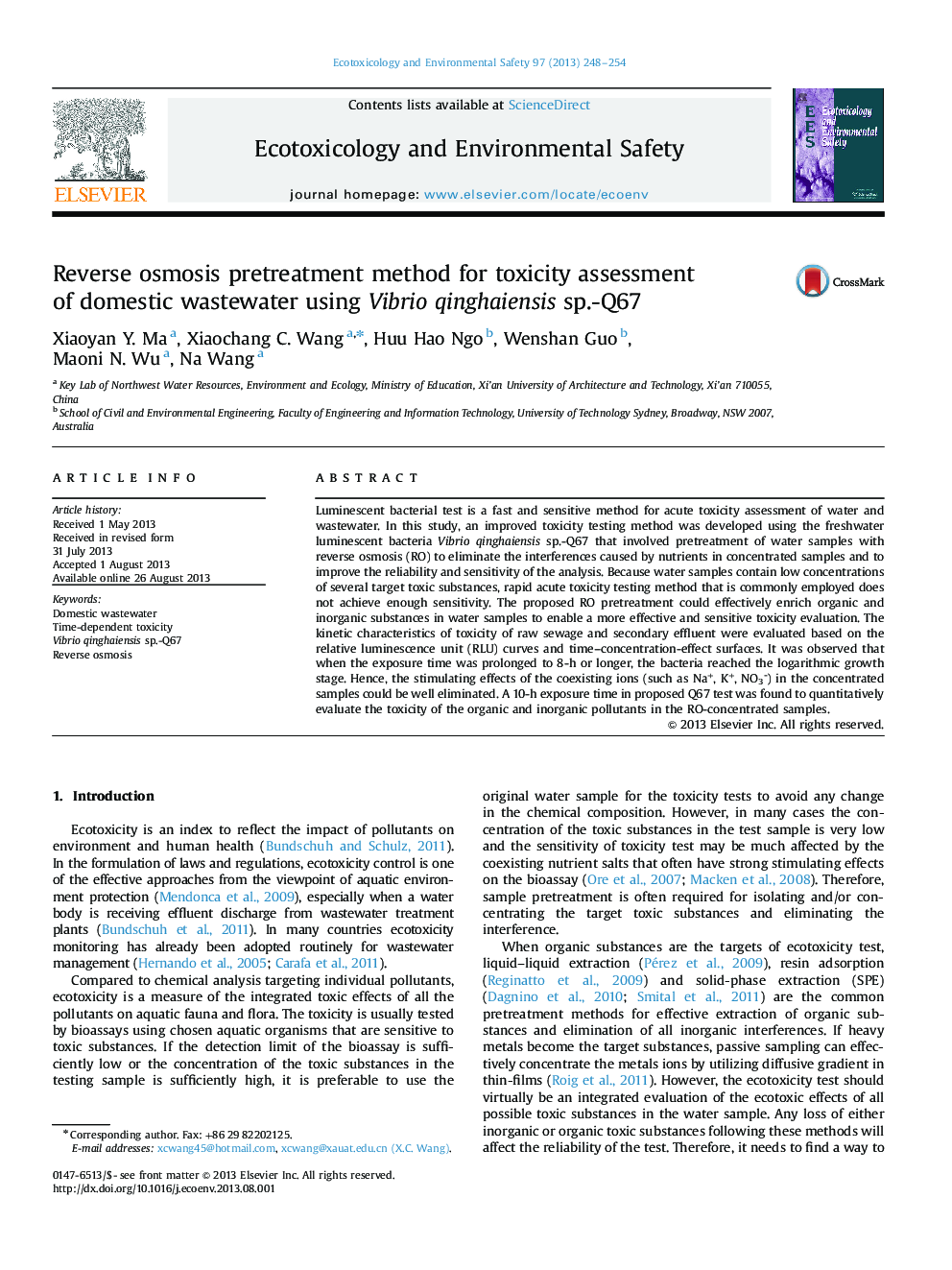| Article ID | Journal | Published Year | Pages | File Type |
|---|---|---|---|---|
| 4420326 | Ecotoxicology and Environmental Safety | 2013 | 7 Pages |
•A specific bioassay using Q67 bacteria and reverse osmosis (RO) was established.•Water samples were pretreated by RO for concentrating toxic substances.•The optimal exposure time for the time-dependent toxicity test was 10 hours.•The stimulating effect of nutrient salts could be effectively eliminated.
Luminescent bacterial test is a fast and sensitive method for acute toxicity assessment of water and wastewater. In this study, an improved toxicity testing method was developed using the freshwater luminescent bacteria Vibrio qinghaiensis sp.-Q67 that involved pretreatment of water samples with reverse osmosis (RO) to eliminate the interferences caused by nutrients in concentrated samples and to improve the reliability and sensitivity of the analysis. Because water samples contain low concentrations of several target toxic substances, rapid acute toxicity testing method that is commonly employed does not achieve enough sensitivity. The proposed RO pretreatment could effectively enrich organic and inorganic substances in water samples to enable a more effective and sensitive toxicity evaluation. The kinetic characteristics of toxicity of raw sewage and secondary effluent were evaluated based on the relative luminescence unit (RLU) curves and time–concentration-effect surfaces. It was observed that when the exposure time was prolonged to 8-h or longer, the bacteria reached the logarithmic growth stage. Hence, the stimulating effects of the coexisting ions (such as Na+, K+, NO3-) in the concentrated samples could be well eliminated. A 10-h exposure time in proposed Q67 test was found to quantitatively evaluate the toxicity of the organic and inorganic pollutants in the RO-concentrated samples.
